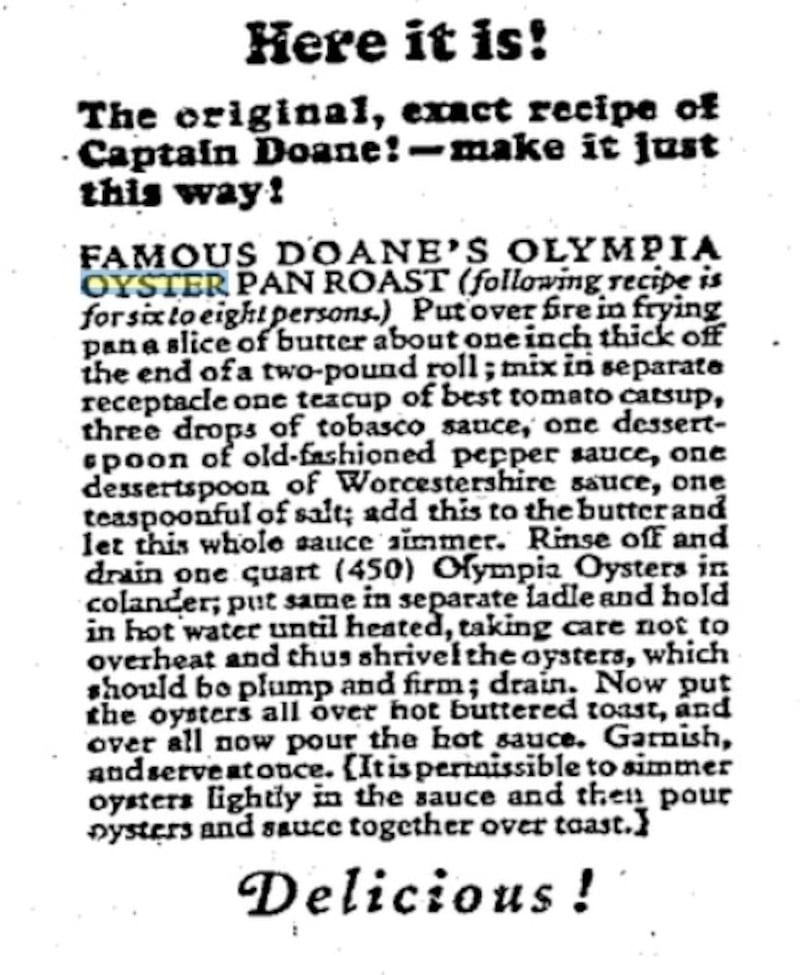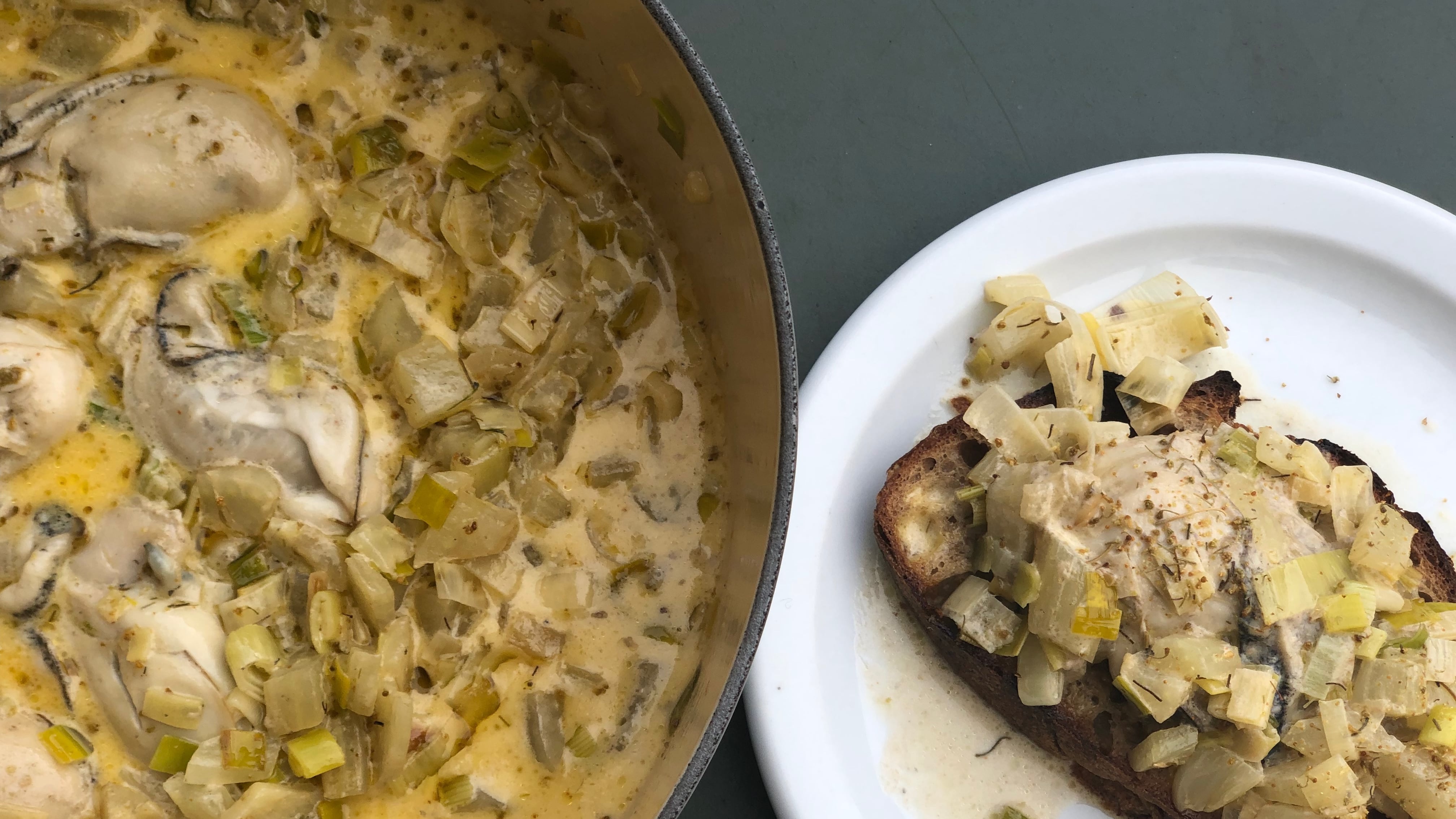Jim Dixon wrote about food for WW for more than 20 years, but these days most of his time is spent at his olive oil-focused specialty food business Wellspent Market. Jim’s always loved to eat, and he encourages his customers to cook by sending them recipes every week through his newsletter. We’re happy to have him back creating some special dishes just for WW readers.
Eating oysters during Christmas might’ve come from an old Irish Catholic tradition of serving a meatless, creamy fish stew. Or maybe it’s because December is smack dab in the middle of months with an “r,” and the colder weather made shipping perishable seafood possible. What really matters is that they’re delicious and feel a little indulgent, especially in this creamy, oyster stew-adjacent pan roast flavored with fennel.
Nobody really knows who cooked the first oyster pan roast. New Yorkers, always bragging about home, claim it originated in the early 1900s at the Oyster Bar in the bowels of Grand Central Terminal, where it’s cooked using the building’s steam heat. But it’s more likely the oyster pan roast actually comes from Olympia, Wash. After spending most of his life running steamboats in British Columbia, in 1880 Capt. Woodbury J. Doane opened his eponymous oyster house at the southern end of Puget Sound where the bivalves were plentiful.
Goldie Robertson Funk, writing in the Pacific Northwest Quarterly more than 70 years ago, noted that “Not only was Doane’s Pan Roast a daily favorite of Olympians and visiting politicians, but travelers coming to the Pacific States made a point of landing at Doane’s Oyster House, coming or going. Foreign visitors from many European countries partook of Doane’s Pan Roast and wrote home to their friends and newspapers about it. It is doubtful if any other human food has had wider spread or more fervid word-of-mouth advertising.”


While both the original and the New York version consist of oysters in a creamy sauce spiked with chile sauce and Tabasco, my favorite pan roast features the licorice-like flavor of fennel from three different sources. Fennel bulb gets softened with leeks, New Orleans’ absinthe stand-in Herbsaint adds a sweet note of anise, and wild fennel pollen lends a gentle, herby perfume. And despite the moniker, the dish cooks on the stovetop in about 30 minutes.
Oyster Pan Roast With Fennel
1 pint oysters, preferably small
1 bulb fennel, chopped
1 leek, halved and sliced about 1/4 inch
2 tablespoons extra-virgin olive oil
1/4 cup Herbsaint liqueur*
1/2 cup heavy cream
1 teaspoon Worcestershire sauce
1/2 teaspoon Crystal Hot Sauce
1 teaspoon fennel pollen, plus more to finish
Kosher-style sea salt to taste
Toasted rustic bread for serving
*Substitute Pernod or any anise-flavored liqueur; it can also be left out.
Cut the stalks from the top of the fennel bulb (some cooks save the frilly fronds for garnish). Cut it in half from top to bottom, then cut into thin slices.
Cut the leek where the green part begins to open up, split it in half lengthwise, pull off the outermost layer, and check for any dirt trapped in the top, which can be rinsed off under running water. Slice each half about 1/4 inch thick.
Cook the fennel and leek in olive oil with a good pinch of salt until soft, about 15 minutes. Add the Herbsaint, cream, Worcestershire, Crystal, and fennel pollen, bring to boil, reduce heat, and simmer until it begins to thicken, about 3-4 minutes.
Add the oysters along with any liquor in the jar. Cook until the oysters’ edges are curling, about 3-5 minutes. For each serving, place a toasted slice of bread on a plate or shallow bowl and spoon the pan roast over the top. Garnish with a small pinch of fennel pollen.
